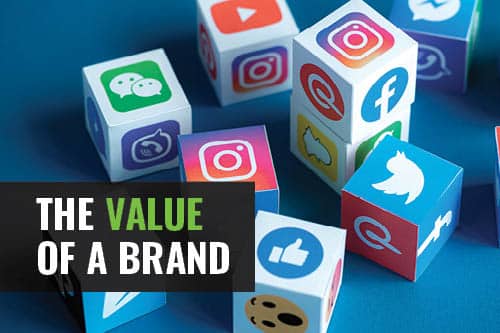The Value of a Brand

In a surprising move, Twitter, the social media giant known for its iconic bird logo and 280-character tweets, recently announced its decision to rebrand as “X.” The news took the internet by storm, sparking discussions among users, analysts, and industry experts. For those companies considering a rebrand, using X can become either a cautionary tale or a springboard to whether a rebrand is or should be in your immediate future.
Founded in 2006, Twitter was originally meant as a way for friends to keep up with what other friends were doing. Twitter since then has grown, really grown, reaching a peak of 336 million active monthly users in 2018. It has become one of the most recognizable brands in the world. In addition to becoming a global phenomenon, to tweet also became a verb.
The author of the book The Brand Gap, Marty Neumeier, sums up the meaning of the brand, “A brand is a person’s gut feeling about a product, service or organization.”
When talking about a brand’s worth, two terms often get mentioned. Brand equity pertains to customer or consumer perceptions, as explained above, while brand value is a financial estimate of the worth of the brand. Both are important.
Rebranding affects both brand equity and brand value. Experts estimate that the Twitter rebrand has cost X billions of dollars in brand value. Millions of users have become confused, disgruntled and unsure if the brand deserves their loyalty.
X believes that a rebrand was important because of the vision of the company and what the brand wants to become. This vision includes expanding its services to include banking, shopping and numerous other functions designed to make X a one-stop app. Some top reasons to rebrand are:
- Reach a new audience
- The company has changed in a significant way
- Try to improve a bad reputation
- The product/service mix has changed
But therein lies the rub. An impatient public may not want to continue on this platform until these services and functionalities become a reality. If rebranding is not shaped by an underlying or proven principle, the decision becomes a knee-jerk reaction instead of a decision based on data and facts.
These risks are multiplied when consumers have readily available substitutes. Threads, Mastodon, Instagram, TikTok and Meta instantly come to mind. Can X remain relevant and profitable with so many well-established substitutes available?
For reasons other than rebranding, many advertisers have left Twitter/X and are spending their dollars elsewhere, which also affects brand value. If they see reasonable ROI on these new investments, they may never return. This hurts not only profits and sustainability, but they also affect the value of the brand.
Rebranding always poses a risk/reward proposition for any company or organization. If the rewards of capturing new or additional business outweigh the cost and potential loss of your most loyal customers, then rebranding is the right choice.
Rebranding, when done correctly, is a very powerful message that captures the essence of your company. It represents a fresh start that strengthens loyalty from existing customers and attracts new ones. Over the years, Callis has guided several companies and organizations through the rebranding process and we suggest that it provides a great opportunity to examine the strengths of your company and the best ways to portray these strengths to the public.
Twitter’s decision to rebrand as X indicates they are daring to reshape the future in the digital landscape. If Twitter/X is able to overcome the initial losses of its surprise move, then rebranding represents a sound decision. If not, customers and advertisers will simply migrate to a platform that better aligns with their values and lifestyle, meaning the bird may have flown the coop for good.

